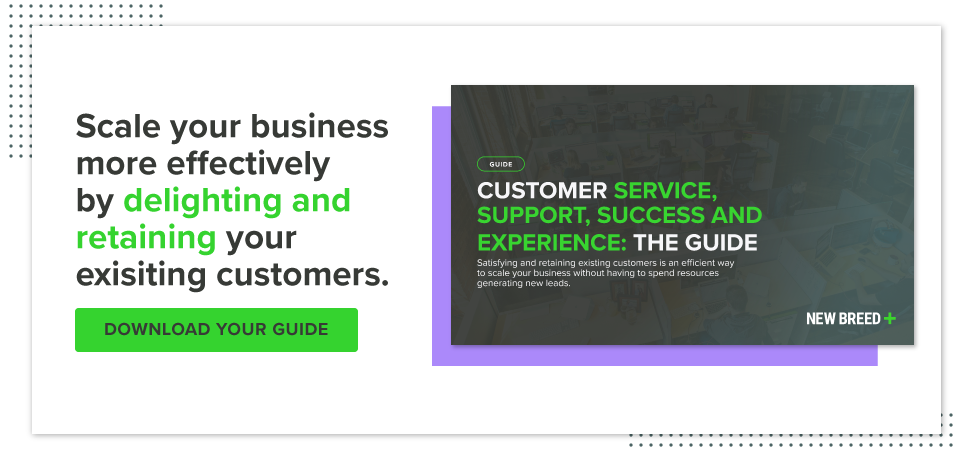
All too frequently, B2B companies neglect to develop a customer marketing function. Rather than allocating resources toward custom communications and content to engage their customer base, too many companies just genericize their acquisition-side marketing so they can use it for customers too.
But, a customer-specific marketing strategy? That’s taking your marketing function to the next level.
It costs five times more to acquire a new customer than it does to retain an existing one, but research shows that only 18% of companies place a greater focus on retention as opposed to 44% that prioritize acquisition.
Customer marketing can help you enable your customers to gain more value from their engagement with you and have a better experience with your brand. Through customer marketing, you can increase retention, evangelize your customer base and nurture existing customers toward future sales.
Customer Marketing Best Practices
Incorporate “Customer Evangelist” into your lifecycle stages
In order to analyze your customer marketing efforts, you should incorporate “Customer Evangelist” into your lifecycle stages. Doing so should help you track and measure what leads customers to become more involved with your company and determine how you can replicate that process.
In order to create a customer evangelist lifecycle stage, you’ll need to establish scoring and triggers that define when a customer has become an evangelist. While NPS results and other forms of positive feedback can be great leading indicators, ultimately, the referral of new business should be what triggers the transition.
Coordinate with acquisition
Your company already has marketing content, and the marketers responsible for attracting and nurturing prospects have a good sense of what information appeals to your buyer personas. If your customer marketing isn’t already owned by your acquisition-side marketing team, then the two teams should at least work together.
Identify what assets in your content repository are useful for your customers too, and consider creating a more targeted customer resource center. Additionally, stay informed about what new content your marketing team is producing so you can promote applicable campaigns to your customers.
Stay focused on customers’ desired outcomes
Helping customers achieve their desired outcomes is where the goal of customer marketing and customer success overlap. Your customer marketing needs to go hand in hand with your customer success team’s efforts.
Document what your customers’ goals are and make that information easily accessible. Then focus your communications around how to help customers achieve their goals.
In this way, your efforts can directly contribute toward retention and expansion, in addition to improving your customers’ perception of your company.
Incorporate behavioral data
Behavioral data will help you understand if your marketing efforts are working or not and inform your communications.
What content of yours has a customer previously engaged with? Do you have related content they haven’t seen yet that they might benefit from?
If you’re a product company, look at usage data. Is their frequency of use changing? Are there features they’re not utilizing? That information can help you send custom communications, such as tutorials or demos, that help customers get more value from your offering.
Additionally, take into account the responses you receive from surveys like the CSAT, NPS and customer effort score in addition to any other feedback mechanisms you have.
That feedback should guide both your personalized customer marketing communications and your company-wide strategy. You don’t want to send messaging that’s drastically at odds with the feedback you receive.
Personalize your outreach
Customer communications shouldn’t be templated or copy and pasted. These people have an established relationship with your company and you need to build on that — not treat them as if they’re strangers.
Your customer marketing shouldn’t be based solely around a customer’s product or job title; it should be built on what that individual or account needs.
Consider making whoever’s responsible for a customer relationship the sender of your marketing communications to create an ecosystem that helps customers have a personalized experience.
The Takeaway
Just like all the other strategies you employ, you need to collect information about your customer marketing, adjust your efforts and then collect information again. The insights gained from customer marketing can inform your product or service, your brand presentation and your best-fit customers.
Plus, effective customer marketing has a high ROI. It costs less to retain customers than acquire them. Investing in customer marketing is a natural step for B2B companies.
To learn more about how to support your customers, read Customer Service, Support, Success and Experience: the Guide.
Elizaveta Shkurina
Sr Creative Strategist specializing in B2B brand creation, sales enablement, and SaaS demand generation. With 8 years of experience, she excels in driving ROI and revenue-driven KPIs through collaborative innovation.





